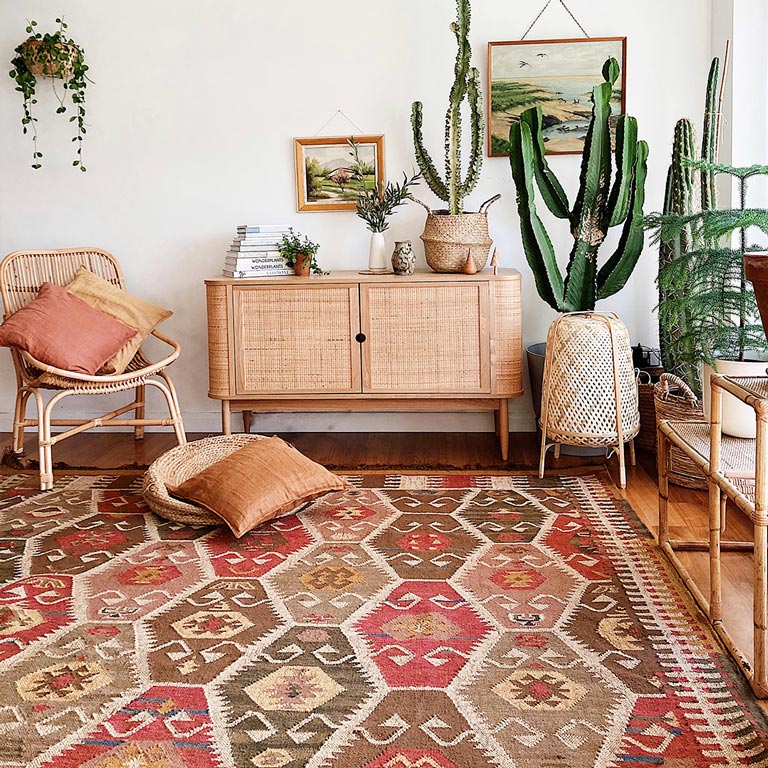From the intricate motifs of Persian rugs to the bold geometric patterns of Turkish kilims, textiles have long been a form of storytelling. Across the globe, weaving techniques have been passed down through generations, preserving not just artistic traditions but entire cultural narratives. In an era of mass production, handcrafted textiles stand as testaments to heritage, skill, and ethical craftsmanship.
The Historical and Cultural Significance of Traditional Weaving Techniques
Weaving is more than a craft—it is an art form deeply intertwined with cultural identity. Various civilizations have developed their own unique styles and techniques, each reflecting the landscapes, beliefs, and histories of their people. For instance:
- Persian Rugs: These masterpieces, often made from silk or wool, feature intricate floral and medallion designs, each carrying symbolic meaning.
- Turkish Kilims: Known for their flat-weave construction, kilims display bold patterns and vivid colors, often representing protection, fertility, or strength.
- Andean Textiles: Woven by indigenous artisans in South America, these pieces incorporate natural dyes and depict myths and historical events.
Kilim Provenance includes some of the finest rugs available, each with a story to tell .You can explore more to add cultural heritage to your home. The patterns and motifs found in kilims often carry deep symbolic meanings. Geometric designs might represent protection, fertility, or the natural world, while specific colors can signify social status, spiritual beliefs, or regional identity. These textiles were not just made for utility but served as a form of communication, telling stories of love, loss, migration, and triumph.
How Kilim Rugs Preserve Heritage and Craftsmanship?
Handwoven kilim rugs are more than just decorative pieces—they are living symbols of cultural heritage and artisanal excellence. Here’s how these authentic, handcrafted rugs help preserve both tradition and craftsmanship:
- Keeping Traditional Weaving Techniques Alive
Kilim weaving is an ancient craft, often passed down through generations within families and communities. Each region has its own unique patterns and techniques, and by continuing to create authentic kilims, artisans ensure that these specialized skills are not lost to industrialization.
- Preserving Cultural Narratives and Symbolism
Every kilim rug tells a story through its patterns and motifs, many of which hold deep cultural significance. Symbols representing protection, fertility, nature, and spirituality are woven into the fabric, serving as a testament to the beliefs and traditions of the weaver’s ancestors.
- Supporting Artisan Communities and Local Economies
Handwoven kilim rugs provide livelihoods for skilled artisans, many of whom come from rural communities where weaving is a primary source of income. Investing in authentic kilims helps sustain these communities, allowing them to continue their craft and pass their knowledge to future generations.
- Ensuring Superior Craftsmanship and Quality
Unlike mass-produced rugs, handcrafted kilims are made using high-quality natural fibers such as wool and cotton, often dyed with plant-based pigments. The durability and intricate craftsmanship of each rug mean they can last for generations, becoming treasured family heirlooms.
- Promoting Ethical and Sustainable Practices
The process of handweaving kilims is inherently sustainable, as it relies on traditional, eco-friendly techniques rather than synthetic materials and industrial machinery. Choosing handcrafted kilims over factory-made alternatives reduces environmental impact and promotes ethical consumerism.
Supporting Ethical Artisans and Sustainable Practices
Choosing authentic, handcrafted kilim rugs is more than just an aesthetic decision—it’s a commitment to ethical craftsmanship and sustainability. Here’s how investing in these handmade pieces supports artisans and promotes eco-friendly practices:
- Fair Wages and Ethical Work Environments
Many kilim weavers are independent artisans or part of small, family-run workshops. Buying authentic rugs ensures that these skilled craftsmen receive fair compensation for their labor, helping to sustain their livelihoods and preserve their cultural heritage.
- Empowering Artisan Communities
Traditional weaving is often a primary source of income for rural communities. Supporting handmade kilims strengthens local economies, allowing artisans to continue their craft and pass their knowledge down to future generations.
- Eco-Friendly and Sustainable Materials
Handwoven kilims are crafted using natural fibers like wool and cotton, often dyed with plant-based or mineral-based pigments. This process eliminates harmful chemicals and reduces the carbon footprint compared to synthetic, machine-made alternatives.
- Zero-Waste, Slow-Made Craftsmanship
Unlike mass-produced rugs, handcrafted kilims are made using time-honored techniques that prioritize quality over quantity. The slow production process ensures minimal waste, making them a sustainable choice for conscious consumers.
Where To Buy Handmade Rugs?
Handmade textiles are more than just decorative items—they are cultural treasures. If you’re looking for eco-friendly and ethically made handmade kilim rugs, click here to explore a curated collection that honors tradition and craftsmanship. Each piece tells a unique story, showcasing cultural heritage while supporting sustainable and ethical practices.



